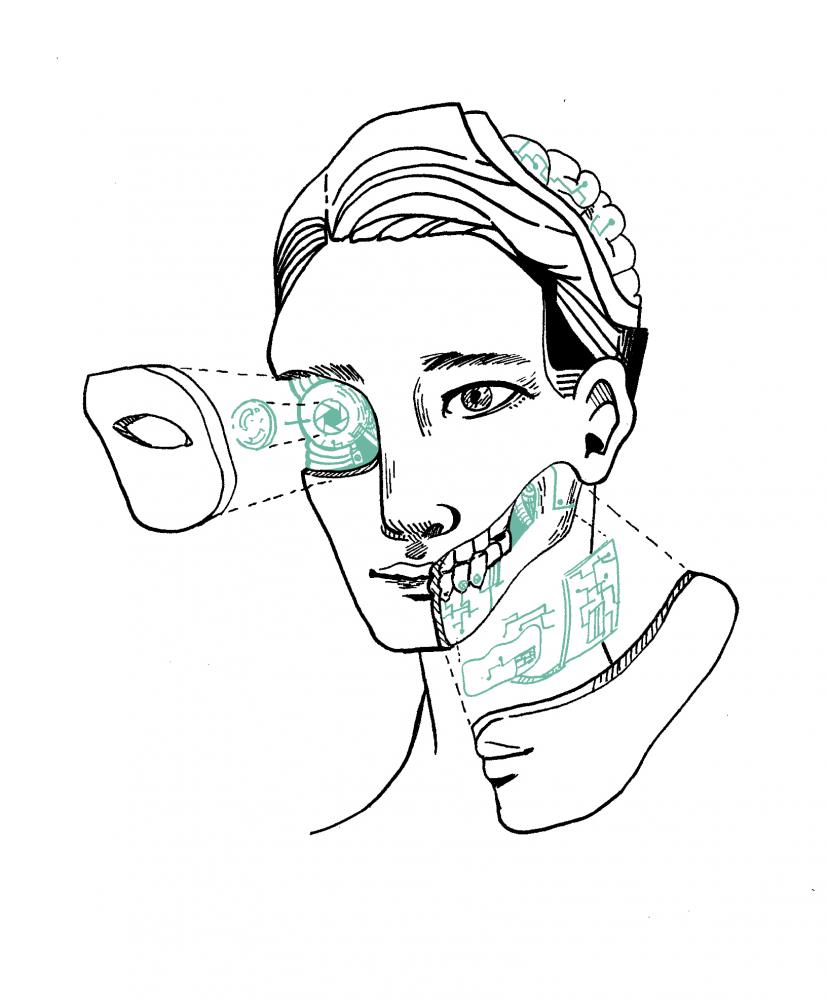Biohacking - Technology and the Human Body
by Bill Gerken | published Feb. 4th, 2015
New cybernetic technology has put us in a position that allows us to interact with the digital world without having to open our laptops or unlock our phones. “H+,” also known as transhumanism, is the philosophy of improving humanity through technology. Transhumanism seeks to provide information and physical technology to create a human race that supersedes our current state. The Transhumanist Declaration, which was written in 1998, sought to place limits and rules on technology that had not even been developed yet. Though this manifesto is made up of both future personal choices made by individuals once technology is available and theoretical information available at the time, a subset of this philosophy has already begun to take root. “Biohacking,” which is the self-initiated technological altering of one's own body through experimental technology in order to provide oneself with varying levels of new sensory awareness, is the predecessor to regulated or practical transhumanism.
Strides in biohacking have already allowed us to push the limits of modern microtechnology. Dave Asprey follows a career in computer security and is the founder and CEO of an influential force in both the biohacking and health fields called The Bulletproof Executive. In a quote with PBS, Asprey describes one version of biohacking as being able to “hack your own biology" and "gain control of systems in your body that you would never have access to.” Asprey identifies himself as a biohacker, and has the hacks to prove it. He employs the use of electricity in an attempt at improving the functions of his body and mind. He has already performed hacks that have helped him lose significant amounts of weight, decreased his biological age by altering his sleep and increased his IQ by more than 20 points. His hope is that applying electricity will aid in further increasing his memory and cognitive functions. This may sound very cerebral, but biohacking isn't always that serious.
In a more physical understanding of biohacking, blogger Adi Robertson of the website “The Verge” has surgically altered herself to combine technology with the human body. Robertson can lift a beer bottle cap with the tip of her finger and pick up small metal objects in a way that, to the common person, would appear to be a psychic power. In 2012, Robertson had a neodymium disc magnet implanted in her ring finger at a tattoo parlor in Brooklyn. Since then, she has had the ability to perform cool "party tricks" that surprise and confuse those around her, such as levitating bottle caps.
This phenomena isn’t telekinetic power, though – this is the next step in technological evolution.
Amal Graafstra, who is featured on Simon Fraser University’s TED Talk, founded a site which helps self-identifying biohackers hack their own body. The site, appropriately named “Dangerous Things,” sells do-it-yourself kits that the average person can purchase to perform a biohack. Aside from selling magnetic chips like Robertson has in her finger, the site also sells injectable radio-frequency identification (RFID) tags and near field communication (NFC) chips. These chips have the capacity of up to a kilobyte of data – whether it’s your name, credit card information or your website hyperlink. These hacks allow for things like unlocking your cell phone, laptop or car upon contact. It creates a unique profile that only you can access, thus increasing security on personal items.
After Graafstra had such success with his biohacking experiments, Lepht Anonym (who does not identify with he/she pronouns and will be referred to as “Anonym” instead) began to develop some new hacks. Anonym is not a doctor, and therefore has no access to anesthetics. As a result, Anonym’s hacks are done with anything from a 5-millimeter injection needle to a scalpel, and even sometimes a vegetable peeler. Anonym is famous in Berlin for self-injecting RFID chips, surgically implanting magnets in Anonym’s fingers and arms and using a vegetable peeler to cut a hole in Anonym’s index finger – all without the comfort of anesthesia. Biohacking has produced a new niche for technological enthusiasts who are willing to risk it all to become the next step in human evolution.
Just about anything can be found and bought on the internet, and sure, you can buy yourself a whole Beginning Biohacking 101 kit that would start you off as the next generation of “Terminator”-style humans. But, as the common saying goes, if someone jumps off a bridge, would you do it too? Avoid performing experiments that may threaten your health – the risks associated with these “self-hacks” are far too prominent to ignore.
There are a plethora of problems associated with biohacking. Anything from the needle to the physical object being implanted has a chance of being unsanitary, which could lead to infection. Not knowing your own body could cause you to accidentally graze an artery with a scalpel or cut a nerve in your hand. Even going to a professional, such as the tattoo artist in Brooklyn mentioned above, can pose a risk, as they may not be a certified surgeon. The benefits of biohacking have the possibilities of being spectacular; biohacking could prove to be the next step in eliminating diseases and health problems, but the threats may outweigh the benefits at this point. Even Anonym has warned biohacking enthusiasts of the risks. After attempting to perform Anonym’s first ever biohack (inserting a neodymium implant), Anonym landed in a hospital with septicemia for two weeks.
The future of biohacking is unclear and the definition of the term is not singular. That being said, the abilities it can provide are astounding and its benefits are considerable. 



